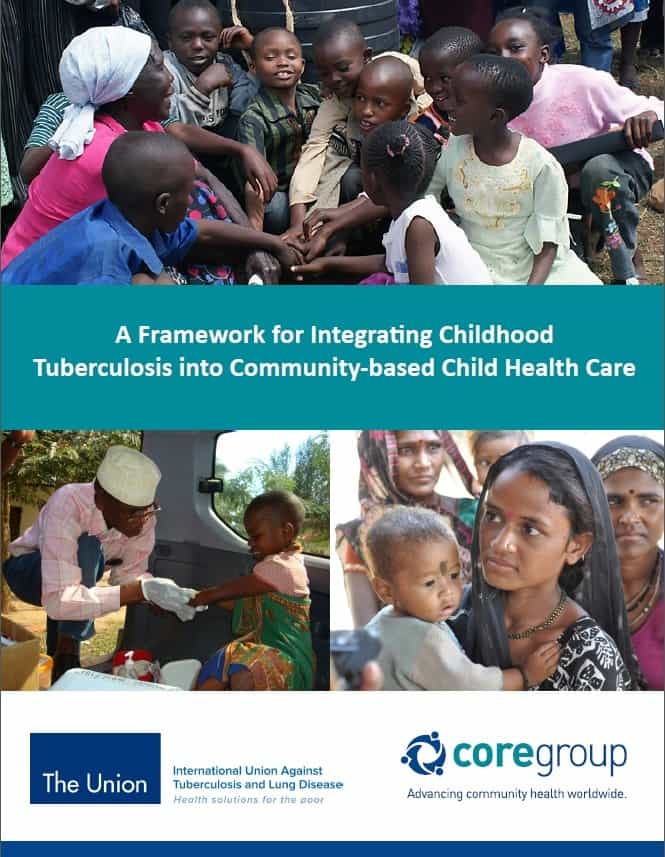 ORGANIZATION
ORGANIZATIONCORE Group
The Union
YEAR PUBLISHED
2013
DESCRIPTION
The World Health Organization (WHO) estimates that approximately 500,000 children each year are diagnosed with tuberculosis (TB) and 64,000 HIV-negative children die annually due to TB. The true burden of childhood TB is unknown; children are often undiagnosed and therefore do not receive appropriate care. Childhood TB is often seen with other common childhood illnesses such as HIV/AIDS, pneumonia and malnutrition, and should be considered in sick children, particularly in areas of high TB burden. Family-centered and community based care models and strategies can be used for TB prevention, identification of children with presumptive TB, and for diagnosis and management of children with TB.
A community approach to TB prevention, case finding, and supportive care is needed to ensure that all infants and children with TB receive high quality care, and to ultimately eliminate TB deaths in children. This need was recently outlined in a roadmap for childhood TB, published by the World Health organization with broad support by UNICEF, The Union, USAID and others. Frameworks such as the Integrated Community Case Management (iCCM) and Integrated Management of Childhood Illness (IMCI) can be modified and used to asses TB risk in children, provide contact tracing, refer to higher level facilities for appropriate diagnosis, and provide treatment support.
This document outlines community-based strategies for integrating childhood TB activities with other maternal and child health care services through existing diagnosis and management algorithms. Such activities include prevention, identification of children with presumptive TB, and referral to higher level facilities. The extent to which community- or facility-based tools and strategies such as integrated Community Case Management (iCCM) of common childhood illnesses or Integrated Management of Childhood Illness (IMCI) can support TB identification and care depend on the setting, availability of services, training of health care workers (HCW), and agreements among all stakeholders involved.
This document is written for decision-makers, program managers, and officials at the global policy and national Ministry of Health (MOH) levels who can (in collaboration with NTPs) make changes to country specific child health frameworks, and also to those in the field who can implement interventions directly. The aim of this guide is to emphasize the importance of childhood TB, stimulate discussion and move toward early integration of childhood TB into other maternal and child care activities.
